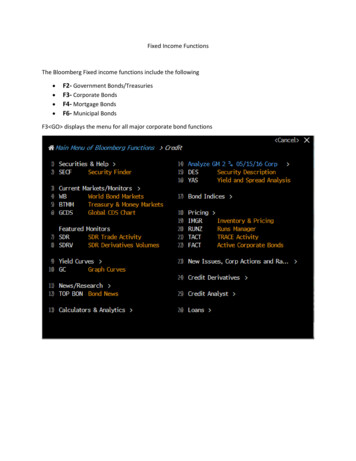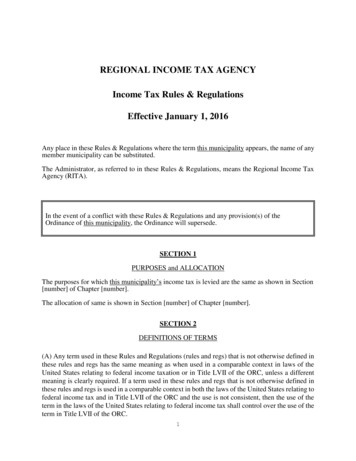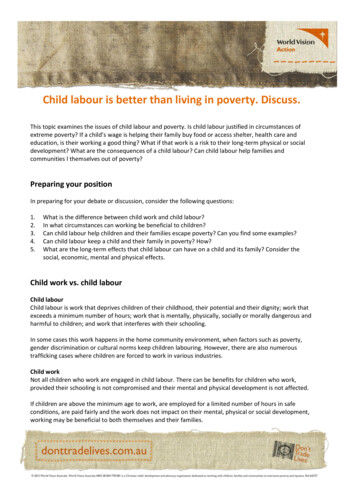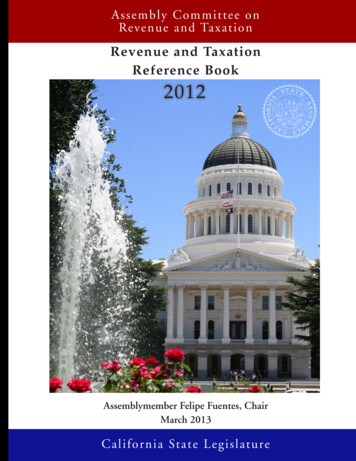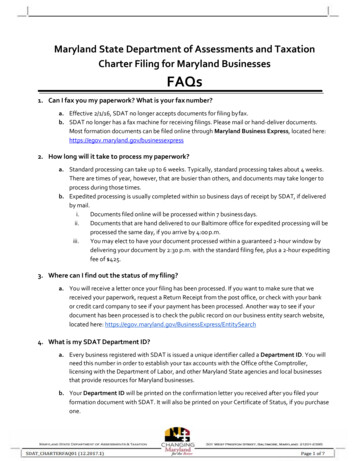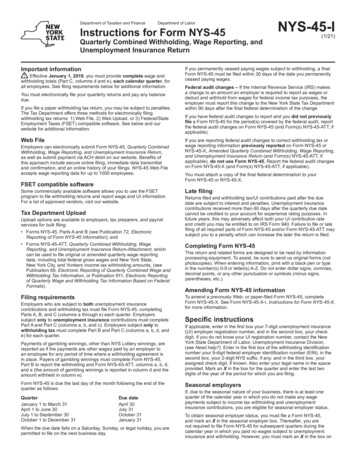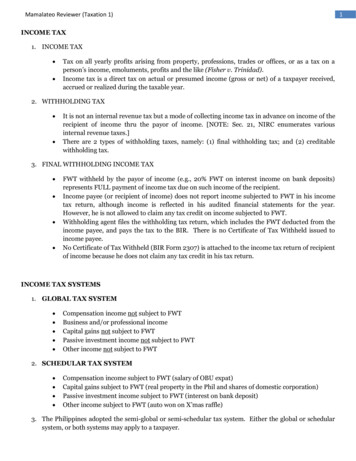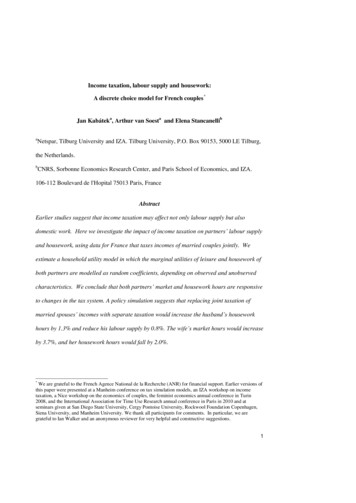
Transcription
Income taxation, labour supply and housework:A discrete choice model for French couples*Jan Kabáteka, Arthur van Soesta and Elena StancanellibaNetspar, Tilburg University and IZA. Tilburg University, P.O. Box 90153, 5000 LE Tilburg,the Netherlands.bCNRS, Sorbonne Economics Research Center, and Paris School of Economics, and IZA.106-112 Boulevard de l'Hopital 75013 Paris, FranceAbstractEarlier studies suggest that income taxation may affect not only labour supply but alsodomestic work. Here we investigate the impact of income taxation on partners’ labour supplyand housework, using data for France that taxes incomes of married couples jointly. Weestimate a household utility model in which the marginal utilities of leisure and housework ofboth partners are modelled as random coefficients, depending on observed and unobservedcharacteristics. We conclude that both partners’ market and housework hours are responsiveto changes in the tax system. A policy simulation suggests that replacing joint taxation ofmarried spouses’ incomes with separate taxation would increase the husband’s houseworkhours by 1.3% and reduce his labour supply by 0.8%. The wife’s market hours would increaseby 3.7%, and her housework hours would fall by 2.0%.*We are grateful to the French Agence National de la Recherche (ANR) for financial support. Earlier versions ofthis paper were presented at a Manheim conference on tax simulation models, an IZA workshop on incometaxation, a Nice workshop on the economics of couples, the feminist economics annual conference in Turin2008, and the International Association for Time Use Research annual conference in Paris in 2010 and atseminars given at San Diego State University, Cergy Pontoise University, Rockwool Foundation Copenhagen,Siena University, and Manheim University. We thank all participants for comments. In particular, we aregrateful to Ian Walker and an anonymous reviewer for very helpful and constructive suggestions.1
Highlights:-Joint taxation of spouses’ incomes is likely to discourage female labour supply.-Joint taxation is likely to reinforce female specialization in house work.-We study how switching to independent taxation affects spouses’ time allocation.-We find that the husband’s house work increases while the wife’s housework drops.-We conclude that the wife’s labour supply increases while the husband’s hours fall.Keywords: time use, taxation, discrete choice modelsJEL classification: J22, H31, C352
1. IntroductionTheoretical studies of income taxation conclude that income taxes may affect not onlyindividual labour supply but also the amount of domestic work produced within thehousehold. Income taxation is likely to affect labour supply and housework hours in oppositedirections because downward changes in the individual rewards from work reduce theindividual opportunity cost of housework and thus, housework becomes more attractive thanmarket work. There is limited empirical evidence on this issue. This paper adds to theliterature by estimating a discrete choice model of both partners’ market and houseworkhours. Using these estimates, we simulate how a change from joint to separate taxation ofmarried spouses’ incomes affects spouses’ hours of market and non-market work. This isespecially interesting since France is one of the few OECD countries that still taxes theincomes of married couples jointly.Apps and Rees (1988, 1999, 2011) argue that although household production is nottaxed (which is unavoidable since its output cannot be observed), the taxation of income islikely to affect not only labour supply but also housework hours of spouses. In particular,married women’s labour supply is likely to increase when replacing joint taxation by separateincome taxation while housework hours are expected to fall.1 Leuthold (1983) estimated thetax elasticities of housework of husband and wife in one and two-earner US households, usinga single equation framework, and found that (joint) income taxation increases houseworkhours of women and reduces housework hours of men. Gelber and Mitchell (2012), focusingon American single women, concluded that when the economic rewards for participating inthe labour force increase, single women’s market work increases and their houseworkdecreases. Rogerson (2009) examined the effects of taxation on housework and labour supplyin the US and Europe from a macroeconomic perspective, and found that when accounting for1See also Kleven et al. (2010) for a recent treatment of the optimal taxation of couples. Alesina et al. (2011)analyze how applying different income tax rates for secondary and primary earners (“selective” taxation) canaffect the distribution of market work and housework within the household.3
home production, the elasticity of substitution between consumption and leisure becomesalmost irrelevant in determining the response of market hours to higher taxes.In this paper we estimate a discrete choice model of both partners’ market laboursupply and housework hours. Partners’ time allocation choices are modelled as the outcomeof maximizing a household utility function which includes household net income among itsarguments. The model accounts for corner solutions (non-participation) in the labour marketas well as non-participation in housework. Fixed costs of paid work are also incorporated. Toapproximate continuous hours decisions, each household’s choice set is discretized and has2,401points. The use of a discrete choice specification enables us to incorporate non-lineartaxes and welfare benefits.The model is estimated on data drawn from the 1998-1999 French Time Use Survey.This survey has the advantage of covering a period during which the incomes of Frenchmarried spouses were taxed jointly and the incomes of cohabiting partners’ were taxedseparately. Moreover, a time diary was collected for both partners in the household on thesame day, which was chosen by the interviewer - in addition to a standard householdquestionnaire and an individual questionnaire. We observe both partners’ market laboursupply, housework hours, individual earnings, and household income, as well as the presenceand age of children and other individual and household characteristics.We find positive own net wage elasticities of market work (equal to 0.20 for the malepartner and 0.55 for the female partner) and negative own wage elasticities of houseworkhours (equal to -0.34 for the male partner and -0.36 for the female partner). An increase in thepartner’s wage rate reduces own market hours and increases own housework hours. Thesecross effects are smaller though than the own-wage effects, as usually found for market work.Own and cross-wage effects are larger for the wife’s market hours than for the husband’s, as itis often found in empirical labour supply studies.4
Finally, we simulate the effects of a shift from the current system of joint taxation ofmarried spouses’ incomes to separate income taxation.2 Joint taxation of spouses’ incomes ismandatory in France. Separate income taxation is applied in most OECD countries, though insome countries (for example, the US and Spain), married couples have the option to choosebetween separate or joint taxation of their incomes. In line with the theoretical expectations,we find that replacing joint taxation of married spouses’ incomes with separate taxation wouldlead to opposite effects for the husband (often the main earner) and the wife (usually thesecondary earner): her labour supply would increase while his would fall; and her houseworkwould fall while his would increase. We conclude that replacing joint taxation with separatetaxation of married spouses’ incomes would increase the wife’s participation in paid work by2.3%-points and her average market hours by 3.7%, while her housework hours would dropby 2.0%. The husband would partly compensate for the changes in the wife’s time allocationby increasing his housework hours by 1.3% and reducing his market hours by 0.8%. Theseeffects, though statistically significant, represent only a small step towards balancing marketand non-market work of the husband and the wife.The structure of the paper is as follows. The model is presented in Section 2. Section3 provides an overview of the French income tax system. The data are described in Section 4.The estimation results and the simulations are discussed in Section 5. Section 6 concludes.2This extends the work of, for example, Steiner and Wrohlich (2004) and Callan et al. (2009), who estimated theinfluence of a similar reform of income taxation for Germany and Ireland, respectively, but only looked atmarket work of the two partners. . However, we leave the nature of the welfare system unchanged which is suchthat welfare payments are means-tested against total household income for both married and cohabiting couplesand may, therefore, discourage labour supply of the secondary earner in the household (usually the femalepartner).5
2. The discrete choice modelOur model is an extension of the unitary discrete choice model of household laboursupply of van Soest (1995).3 Here we allow individuals in a couple to choose between marketwork, housework, and leisure. Conventional models allow individuals to choose betweenmarket work and everything else, thus treating housework as “pure” leisure. In our modelhousehold utility depends on both partners’ time allocation and on after-tax householdincome. This last varies with the allocation of hours of market work chosen by the partnersand their gross wage rates, given the tax and benefits system. We also specify fixed costs ofmarket work and allow for unobserved heterogeneity in partners’ preferences. The choice setis discretized and includes an error term that is specific to each possible choice under arandom utility framework.Theoretical set upFormally, let m denote the ‘husband’ and f the ‘wife’ (naming for the sake ofsimplicity, the female partner as the ‘wife’ and the male partner as the ‘husband’, regardlessof the couple marital status), let tml and t lf be the leisure hours of husband and wife, tmw and t wf their labour supplies, and tmh and t hf their housework hours. The utility maximized by thecouple household is a function of partners’ labour supply, housework, leisure and the ensuingafter tax household income. Because the total time allocation is fixed (it cannot exceed 24hours a day), we can write utility as a function V of only five arguments, taking market workas the residual category (see time constraint below):(1)V V (tml , tmh , t lf , t hf , y) .3A discrete choice model of labour supply has also been used by, for example, Aaberge et al. (1995, 1999),Hoynes (1996), and Keane and Moffitt (1998). See also Dagsvik (1994) on the theoretical foundation of theusual functional form assumptions in this type of model.6
The budget constraint (2) gives family income y after taxes and benefits as a function of grossearnings, total household non-labour income Y0 , and the amount of taxes and benefits T,4which depends on the various income components and on household characteristics X:y wmtmw w f t wf Y0 T (Y0 , wmtmw , w f t wf , X ) 1{tmw 0}FCm 1{t wf 0}FC f(2)Partners’ gross wage rates are denoted by wm and w f . The final two terms reflect the fixedcosts of market work of each partner (where 1{.} denotes the indicator function as standard).The household also faces two time constraints given by the total hours endowment E (say 24hours per day) for each partner:tml E tmw tmh(3)t lf E t wf t hfTherefore, household production is not modelled explicitly as for example in Apps and Rees(1999), but is incorporated implicitly by allowing the partners’ paid and unpaid housework tohenter the model through tmh and t f . Here the marginal utilities capture not only how partnersvalue paid work relative to housework, but also the utility that comes from householdhproduction (which increases with tmh and t f ).5 In particular, the implications of the model asgiven by the expected signs of the partial derivatives of V are as follows: V if husband’s leisure is preferred to husband’s paid work, keeping constant the tmlother arguments of V (including husband’s housework and after tax family income y). V 0 if leisure of the wife is preferred to paid work of the wife, keeping other t lffactors constant.4T also captures welfare transfers (see Section 3), which can be seen as negative tax payments.The model does not specify private consumption (this is not observed in the data either), which implies that wecannot analyze the consequences of policy changes that affect the prices of goods or services bought from themarket (such as a change in VAT) and that may substitute for home produced goods or services (not subject toVAT, as it is hard to measure the output of home production).57
V 0 if housework done by the husband is preferred to paid work done by the tmhhusband, keeping other arguments of V constant, including tml and y. If paid and unpaidwork hours are equally attractive or unattractive, we expect V 0 because tmhhousework increases household production, while income from paid work (y) is keptconstant. V 0 if housework done by the wife is preferred to paid work done by the wife, t hfkeeping the other arguments of V constant. V 0 if more household income is better, keeping the allocation of hours chosen by ythe couple (and therefore also the household production) constant.As in Van Soest (1995), only the final inequality is needed to ensure that the model isconsistent with the underlying theory as it excludes the possibility that utility falls withincome -we assume that the household chooses a point on its budget frontier. There is no needto impose any restrictions on the second order derivatives of V, such as quasi-concavitybecause to estimate the model we do not have to recur to first and second derivatives –wesimply need to compare a finite number of utility value
Income taxation, labour supply and housework: A discrete choice model for French couples* Jan Kab á teka, Arthur van Soesta and Elena Stancanellib aNetspar, Tilburg University and IZA. Tilburg University, P.O. Box 90153, 5000 LE Tilburg, the Netherlands. bCNRS, Sorbonne Economics Research Center, and Paris School of Economics, and IZA. 106-112 Boulevard de l'Hopital 75013 Paris, France .

